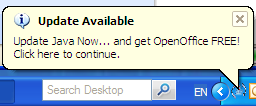I started The Project primarily so I could learn PHP. I’ve been using ASP (classic and .Net) for a while now, but wanted to try another web development language, preferably one that would be compatible with my dirt cheap web hosting. The way I envisaged it, it would be straight HTML/CSS, no fancy AJAX, using PHP and database lookups.
For development, I set up a Virtual PC with Win2K on it (quickest, best, easiest basic Windows version I had an unused licence for) and put IIS and PHP and MySQL on it. All reasonably easy. For database admin I put on PhpMyAdmin; it’s what runs on my web ISP, and is reasonably easy to use. For the IDE I looked around at Zend and some of the other paid tools, but decided to try DevPHP, a freeware thing, until I figured out if this project was going to fly.
It was all going well until I wanted to do some mod_rewrite fiddling with .htaccess. There are a few things around the place that purport to make mod_rewrite (or an approximation of it) work in IIS, but nothing seemed to do it well. In a fit of rage I ended up removing IIS and going the whole hog and installing Apache instead. It actually runs very well on Windows, and (after re-installing PHP and doing some config fiddling) matches my web ISP much better than any version of IIS could.
After using it for a bit, I also got a bit fed-up with PhpMyAdmin, which is particularly laborious for entering data. It’ll only do two records at a time, and semi-regularly seemed to ignore the second. Then I found the MySql GUI tools, which by comparison are an absolute Godsend. Why did nobody tell me about this before? (Actually it looks like I found a bit of it some time ago, but hadn’t used it properly until now.)
The coding has been coming along nicely, and the basic functionality is ready. I’ve got a couple more enhancements I’d like to do before it goes public.
So what is The Project? Not telling. But it’s aimed at non-geeks, going to be free for users, with Google Adsense to try and pull in some income (and get it indexed quickly). Maybe it’ll pay for itself, maybe not. But even if not, it’s already been successful as a way for me to learn some PHP.
Update 2007-04-19: The Project is now live.

